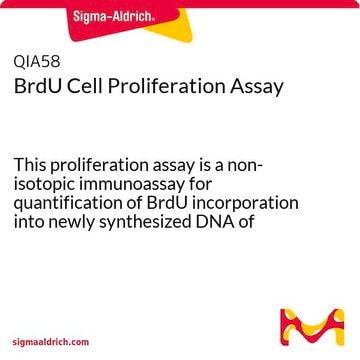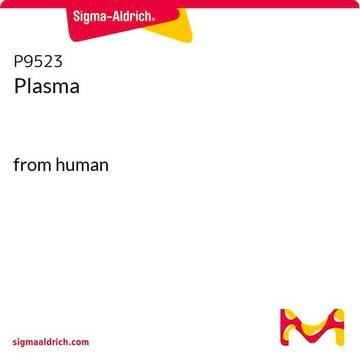NS225
Neurite Outgrowth Assay Kit (1 µm)
The NS225 Neurite Outgrowth Assay Kit (1 μm) is based on the use of Millicell cell culture inserts (chambers) containing a permeable membrane with 1 μm pores at the base.
Sinonimo/i:
Neurite growth assay
About This Item
Prodotti consigliati
Livello qualitativo
Reattività contro le specie (prevista in base all’omologia)
all
Produttore/marchio commerciale
Chemicon®
tecniche
cell based assay: suitable
Metodo di rivelazione
colorimetric
Condizioni di spedizione
wet ice
Descrizione generale
Applicazioni
Componenti
Neurite Stain Solution: (Part No. 90242) One 20 mL bottle.
Neurite Stain Extraction Buffer: (Part No. 90243) One 20 mL bottle.
Neurite Outgrowth Assay Plate: (Part No. 2007255) Two 24-well plates.
Cotton Swabs: (Part No. 10202) 50 swabs.
Forceps: (Part No. 10203) One each.
Stoccaggio e stabilità
Note legali
Esclusione di responsabilità
Avvertenze
Danger
Indicazioni di pericolo
Consigli di prudenza
Classi di pericolo
Eye Irrit. 2 - Flam. Liq. 2
Codice della classe di stoccaggio
3 - Flammable liquids
Certificati d'analisi (COA)
Cerca il Certificati d'analisi (COA) digitando il numero di lotto/batch corrispondente. I numeri di lotto o di batch sono stampati sull'etichetta dei prodotti dopo la parola ‘Lotto’ o ‘Batch’.
Possiedi già questo prodotto?
I documenti relativi ai prodotti acquistati recentemente sono disponibili nell’Archivio dei documenti.
Articoli
Optimized cell based neurite outgrowth assays and reagents to study neuron function and development.
Filtri attivi
Il team dei nostri ricercatori vanta grande esperienza in tutte le aree della ricerca quali Life Science, scienza dei materiali, sintesi chimica, cromatografia, discipline analitiche, ecc..
Contatta l'Assistenza Tecnica.










